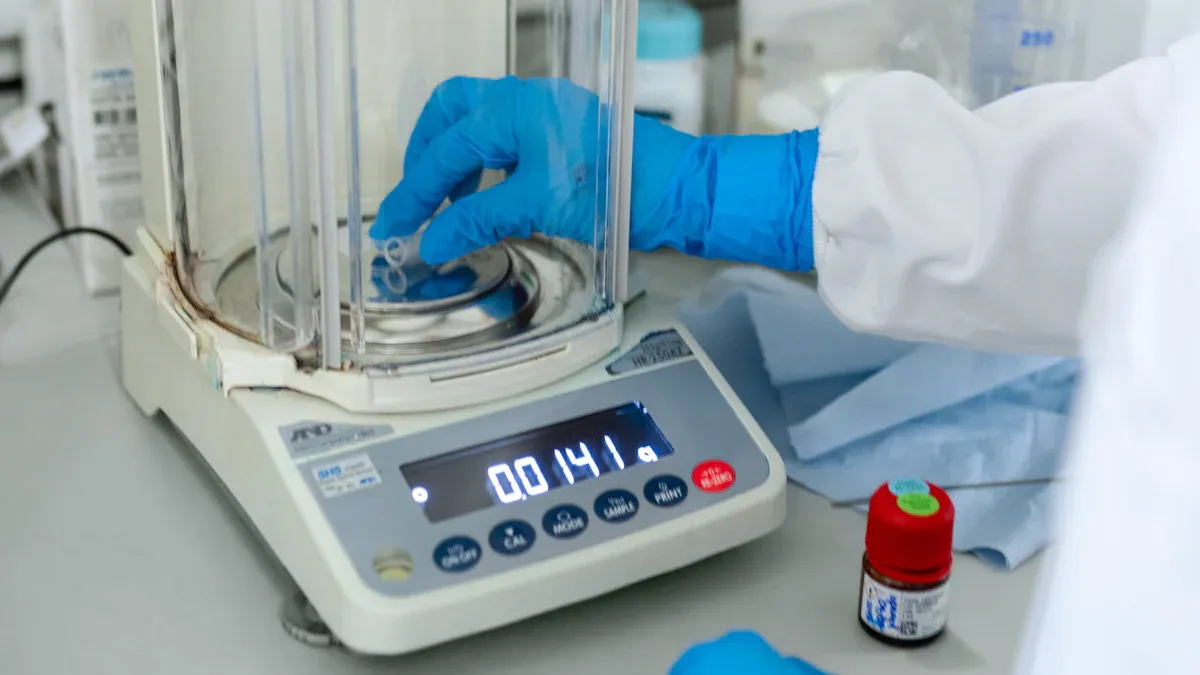Understanding how Precision Balances differ from Analytical Balances is essential for anyone working in laboratories, manufacturing, or quality control. While both instruments measure mass accurately, their sensitivity, applications, and design vary significantly. Knowing these differences helps professionals choose the right balance for precise and efficient measurements. This article explores their key distinctions to help you make informed decisions for your specific weighing needs.
What Is Precision Balance

Definition and Functionality
A precision balance is a laboratory instrument that measures mass with moderate to high accuracy. It uses a digital or mechanical system to provide reliable measurement results. Precision balances help users weigh samples that do not require extremely fine sensitivity.
Features and Specifications
Precision balances offer a range of features that support laboratory work. Most models provide digital displays, easy calibration, and stable platforms. The following table highlights common specifications:
|
Feature |
Description |
|---|---|
| Readability | 0.01 g to 1 g |
| Capacity | Up to several kilograms |
| Calibration | Manual or automatic |
| Display | Digital LCD or LED |
| Draft Shield | Usually not included |
Precision balances deliver consistent measurement results for larger samples. They maintain good accuracy but do not match the sensitivity of analytical balances.
Applications
Precision balances serve many roles in laboratories, schools, and industry. Scientists use them for sample preparation, chemical formulation, and quality control. These balances also support educational experiments and routine measurement tasks.
Precision balances handle tasks that require dependable measurement but not the highest sensitivity. They remain a popular choice for general laboratory use.
What is Analytical Balance

Definition and Functionality
An analytical balance measures very small mass differences with high precision. This instrument uses a draft shield to protect the weighing chamber from air currents. Analytical balances help scientists achieve the highest level of accuracy in measurement.
Features and Specifications
Analytical balances include advanced features that support sensitive weighing tasks. Most models have a readability of 0.1 mg or 0.0001 g. The weighing chamber often includes a glass draft shield to prevent errors from dust or air movement.
|
Feature |
Description |
|---|---|
| Readability | 0.1 mg (0.0001 g) |
| Capacity | 100 g to 500 g |
| Calibration | Internal or external |
| Display | High-resolution digital |
| Draft Shield | Always included |
Analytical balances require careful handling. Users must avoid touching the weighing pan with bare hands to prevent contamination.
Applications
Analytical balances play a key role in laboratories that demand precise measurement. Chemists use them for preparing standard solutions and performing quantitative analysis. These balances also support pharmaceutical research, environmental testing, and quality control.
Analytical balances ensure that scientists can trust their results. Their design and features make them the top choice for critical laboratory work.
Comparing Analytical and Precision Balances
Accuracy & Sensitivity
Precision balances provide high precision for most laboratory tasks. They usually offer a resolution from 0.01 g to 1 g. Analytical balance models reach a much higher accuracy, often in the sub-milligram range, with a resolution of 0.1 mg or even an accuracy of 0.0001 to 0.00001g.
Analytical balances detect small mass differences that precision balances cannot measure. These instruments deliver high-resolution readings and repeatable measurement results. Scientists rely on analytical balances for accurate measurements in sensitive experiments.
Capacity & Range
Precision balances support larger sample sizes. Their capacity can reach several kilograms, making them suitable for weighing bulk materials. Analytical balances have a lower capacity, usually between 100 g and 500 g.
The higher resolution of analytical balances limits their weighing range. Precision balances handle heavier samples but with less sensitivity. Users must choose based on the sample size and required resolution.
|
Feature |
Precision Balances |
Analytical Balance |
|---|---|---|
| Resolution | 0.01 g to 1 g | 0.1 mg (0.0001 g) |
| Capacity | Up to several kilograms | 100 g to 500 g |
| Sensitivity | Moderate | High precision |
Price Differences
Precision balances cost less than analytical balances. Their simpler design and lower resolution make them more affordable. Analytical balances require advanced technology for high accuracy, which increases their price.
Laboratories with tight budgets often select precision balances for routine tasks. Analytical balances represent a larger investment but provide unmatched accuracy for critical measurements.
Applications
Precision balances work well for general laboratory tasks, educational settings, and industrial applications. They measure powders, liquids, and solids where high precision is not essential. Analytical balances serve in quantitative chemical analysis, pharmaceutical research, and any experiment that demands high accuracy.
When comparing analytical and precision balances, users should match the instrument to the task. Analytical balances excel in situations that require high precision and resolution. Precision balances offer flexibility for larger samples and less sensitive measurements.
Choosing the Right Balance
Assessing Needs
Selecting the right balance starts with understanding the specific needs of the laboratory. Scientists should consider the smallest mass they need to measure and the level of accuracy required. A laboratory balance with higher sensitivity suits tasks that demand precise results.
A laboratory balance with moderate precision works well for routine measurements. Users should also think about how often they will use the laboratory balance. Frequent use may require a more durable laboratory balance with easy calibration features.
Sample Types
The type of sample plays a key role in selecting the right laboratory balance. Powders, liquids, and solids may each need a different laboratory balance. For example, weighing fine powders or small liquid samples often requires an analytical laboratory balance.
Larger or bulkier samples fit better on a precision laboratory balance. Some laboratory balances come with special pans or accessories for unique sample types. Users should match the laboratory balance to the sample for best results.
|
Sample Type |
Recommended Laboratory Balance |
|---|---|
| Fine powders | Analytical laboratory balance |
| Small liquids | Analytical laboratory balance |
| Bulk solids | Precision laboratory balance |
| Routine samples | Precision laboratory balance |
Budget & Environment
Budget limits can affect the choice of laboratory balance. Analytical laboratory balances cost more because they offer higher accuracy. Precision laboratory balances provide a more affordable option for general tasks.
The laboratory environment also matters. Drafts, vibrations, and temperature changes can impact the performance of a laboratory balance. Placing the laboratory balance in a stable, clean area helps ensure accurate results.
Conclusion
understanding how Precision Balances differ from Analytical Balances enables professionals to select the right instrument for their specific weighing needs. Precision balances provide versatility and capacity for general laboratory and industrial tasks, while analytical balances deliver the ultra-fine accuracy required for scientific research and quality control. Choosing the correct balance ensures reliable results, efficient workflows, and greater confidence in every measurement.
